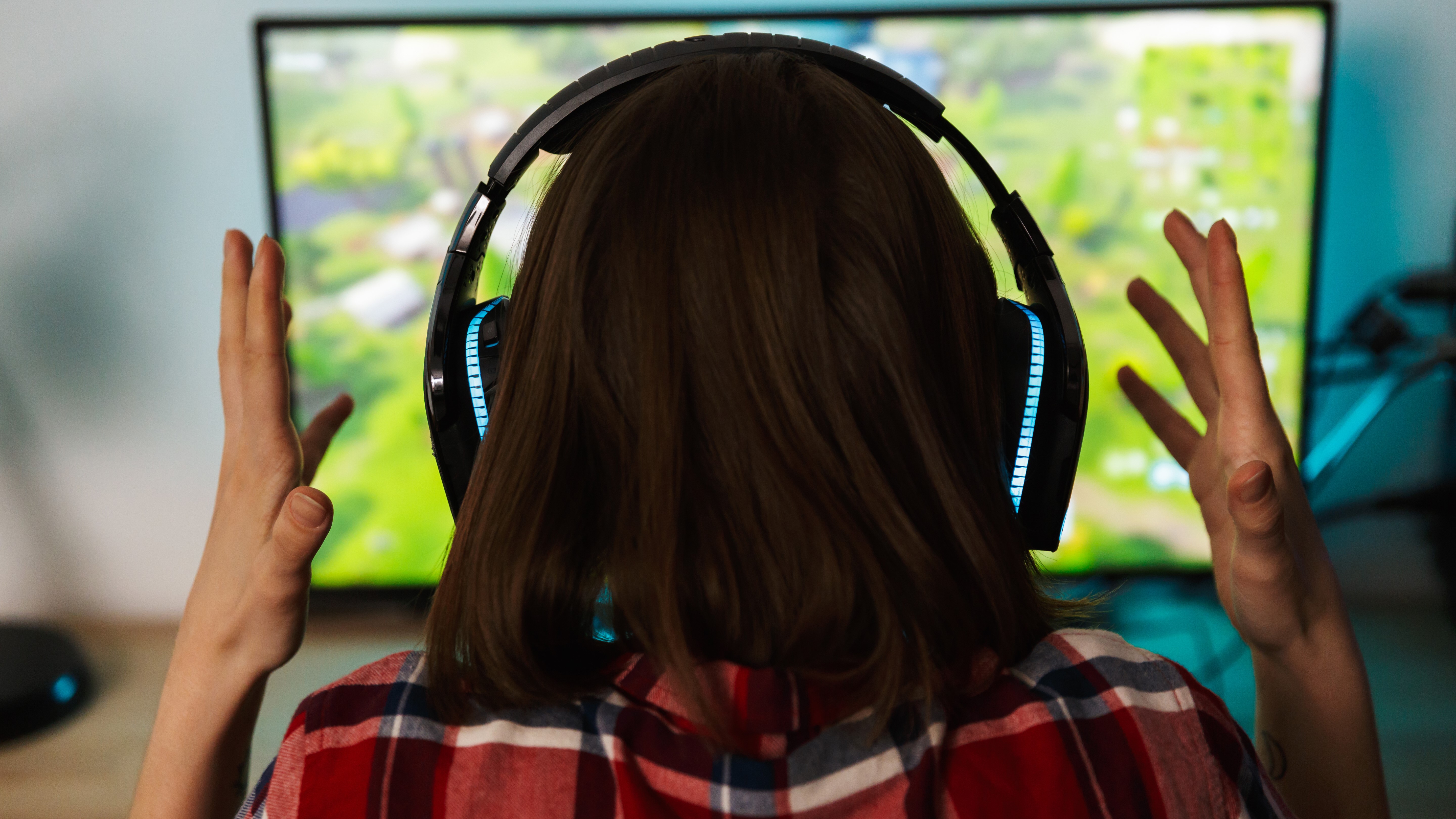0 Commentarii
0 Distribuiri
162 Views

Director
Director
-
Vă rugăm să vă autentificați pentru a vă dori, partaja și comenta!
-
 LIFEHACKER.COMWhat's New on Paramount+ With Showtime in January 2025The Star Trek collection on Paramount+ is getting a new addition in January. Star Trek: Section 31 (Jan. 24) is the 14th filmand first TV moviein the franchise and stars Michelle Yeoh reprising her Star Trek: Discovery role as Emperor Philippa Georgiou. The story is set between Star Trek: The Original Series films and Star Trek: The Next Generation series and sees Yeoh's character join the secret Section 31, which is tasked with protecting United Federation of Planets. New series to the platform in January include a reprisal of the classic gameshow Hollywood Squares (Jan. 9) hosted by Nate Burleson and Drew Barrymore and Watson (Jan. 26), a medical and investigative drama starring Morris Chestnut as Sherlock Holmes' friend and partner in the months following the detective's death. Paramount+ with Showtime viewers can watch the livestream of The Golden Globe Awards on Jan. 5, and all Paramount+ subscribers will get CBS's NFL coverage in January, including the NFL Wild Card game (Jan. 11 or 12), the AFC divisional playoff game (Jan. 18 or 19), and the AFC championship (Jan. 26). Heres everything else coming to the service in January. Note that titles with an asterisk are exclusive to Paramount+ With Showtime; everything else is also available to subscribers on the ad-supported plan. Those with two asterisks are available to Paramount+ With Showtime users streaming live on CBS and to all subscribers the following day.Paramount+ Originals and premieres coming in January 2025Available January 1Murder Company*Slingshot*Available January 17Henry Danger: The Movie, premiere Available January 24Star Trek: Section 31, premiere TV shows coming to Paramount+ in January 2025Available January 5The Golden Globe Awards**Available January 8Raid the Cage (season 2)**The Price is Right at Night**Available January 9Hollywood Squares**Available January 15Danger Force (season 3)Matlock (1986, seasons 1-9)Available January 22Isle of MTV: Malta (2024 special)Help! Im in a Secret Relationship (season 3)Available January 26Watson**Available January 29The Tiny Chef Show (season 2)Available January 31NCIS: Sydney (season 2)**Movies coming to Paramount+ in January 2025Available January 12 Days In The Valley40 Days and 40 NightsA Crime on the BayouA Dog's PurposeA Night At The RoxburyA.C.O.D.AdventurelandAgent Game*AlliedAlmost Famous AmistadAn Officer and a GentlemanArrivalBarbarella Basic InstinctBecky*Best DefenseBig JakeBlack NoiseBook ClubBoomerang Bounce BreakdownBuddy GamesChinatownChocolatCitizen Ruth Clear and Present DangerCold Mountain Confessions Of A Dangerous MindCop LandCrawlspaceCrazy, Stupid, Love. CursedDark AssetDeath Wish Dirty Pretty ThingsDomestic Disturbance Don't Look NowDown To You Downsizing Drillbit TaylorDrive Angry*Drop Zone Ella EnchantedEmma (1996)Face/OffFatal AttractionFinal DestinationFirst BloodFlorence Foster JenkinsFocusFootloose (2011)Forces of Nature FoxfireFridaGood BoyGood Mourning*Halloween VIII: ResurrectionHeaven Can WaitHouse of Sand and FogImagine ThatIndecent ProposalJack Ryan: Shadow RecruitJackass Presents: Bad GrandpaJackass Presents: Bad Grandpa .5 Unrated Judgement Night Just a KissK-19: The WidowmakerKinky BootsKiss The GirlsLabor DayLabyrinthLady of the Manor*Like a BossMr. Malcom's List Naked Gun 33 1/3: The Final Insult NightwatchPaid in Full Panama*Paper MoonParanormal ActivityParanormal Activity 2Paranormal Activity 3Paranormal Activity 4Paranormal Activity: The Marked OnesPatriot GamesPet Sematary IIPoltergeistRabbit-Proof FenceRace for Your Life, Charlie BrownRambo IIIRambo: First Blood Part IIRed Eye Revolutionary RoadRosemary's BabyRun & GunSanta Stole Our Dog!Scary Movie Scary Movie 2SeabiscuitSearching For Bobby FischerSherlock GnomesShutter Island Sidewalks Of New YorkSilenceSlingshot Snake EyesSome Kind of WonderfulStardust Staying AliveStrictly Ballroom Tales From the Darkside: The Movie Tammy's Always Dying*The Addams Family (1991)The AviatorThe Conversation The CrowThe Crow: City of AngelsThe Crow: Wicked Prayer The Doors The First Wives ClubThe GamblerThe Honeymooners The HoursThe HunterThe Importance of Being Earnest The Intervention The Ladies ManThe Long Kiss GoodnightThe Longest YardThe Manchurian CandidateThe MechanicThe Naked Gun 2 1/2: The Smell of FearThe Naked Gun: From the Files of Police Squad!The Night ClerkThe Original Kings of ComedyThe PeacemakerThe Perfect ScoreThe PledgeThe Queens of ComedyThe RomanticsThe Ruins The Running ManThe ScoreThe SoloistThe Spiderwick ChroniclesThe SwitchThe Talented Mr. RipleyThe Three AmigosThe Truman ShowThe Two JakesThe United States of LelandThe UntouchablesThe Virgin SuicidesThe Wolf of Wall StreetThe WordsThe YardsThere Will Be BloodThings We Lost In The FireThree Days of the CondorTrainspottingTrekkies 2UndisputedV for VengeanceVirtuosityWaking Up In RenoWar*WifeLikeZeroville*ZodiacAvailable January 2Step Up Revolution*Available January 480 for BradyAvailable January 8Blippi's Big Dino AdventureBlippi's Out-of-this-World Space AdventureBlippi's Wonderful World TourAvailable January 21Long Gone HeroesAvailable January 26Who's Your Caddy?*Available January 28Killshot*Mona Lisa and the Blood Moon*Available January 29The Land*Available January 31A Murder in the Park*Good Kill*Manglehorn*The D Train*The Seven Five*0 Commentarii 0 Distribuiri 173 Views
LIFEHACKER.COMWhat's New on Paramount+ With Showtime in January 2025The Star Trek collection on Paramount+ is getting a new addition in January. Star Trek: Section 31 (Jan. 24) is the 14th filmand first TV moviein the franchise and stars Michelle Yeoh reprising her Star Trek: Discovery role as Emperor Philippa Georgiou. The story is set between Star Trek: The Original Series films and Star Trek: The Next Generation series and sees Yeoh's character join the secret Section 31, which is tasked with protecting United Federation of Planets. New series to the platform in January include a reprisal of the classic gameshow Hollywood Squares (Jan. 9) hosted by Nate Burleson and Drew Barrymore and Watson (Jan. 26), a medical and investigative drama starring Morris Chestnut as Sherlock Holmes' friend and partner in the months following the detective's death. Paramount+ with Showtime viewers can watch the livestream of The Golden Globe Awards on Jan. 5, and all Paramount+ subscribers will get CBS's NFL coverage in January, including the NFL Wild Card game (Jan. 11 or 12), the AFC divisional playoff game (Jan. 18 or 19), and the AFC championship (Jan. 26). Heres everything else coming to the service in January. Note that titles with an asterisk are exclusive to Paramount+ With Showtime; everything else is also available to subscribers on the ad-supported plan. Those with two asterisks are available to Paramount+ With Showtime users streaming live on CBS and to all subscribers the following day.Paramount+ Originals and premieres coming in January 2025Available January 1Murder Company*Slingshot*Available January 17Henry Danger: The Movie, premiere Available January 24Star Trek: Section 31, premiere TV shows coming to Paramount+ in January 2025Available January 5The Golden Globe Awards**Available January 8Raid the Cage (season 2)**The Price is Right at Night**Available January 9Hollywood Squares**Available January 15Danger Force (season 3)Matlock (1986, seasons 1-9)Available January 22Isle of MTV: Malta (2024 special)Help! Im in a Secret Relationship (season 3)Available January 26Watson**Available January 29The Tiny Chef Show (season 2)Available January 31NCIS: Sydney (season 2)**Movies coming to Paramount+ in January 2025Available January 12 Days In The Valley40 Days and 40 NightsA Crime on the BayouA Dog's PurposeA Night At The RoxburyA.C.O.D.AdventurelandAgent Game*AlliedAlmost Famous AmistadAn Officer and a GentlemanArrivalBarbarella Basic InstinctBecky*Best DefenseBig JakeBlack NoiseBook ClubBoomerang Bounce BreakdownBuddy GamesChinatownChocolatCitizen Ruth Clear and Present DangerCold Mountain Confessions Of A Dangerous MindCop LandCrawlspaceCrazy, Stupid, Love. CursedDark AssetDeath Wish Dirty Pretty ThingsDomestic Disturbance Don't Look NowDown To You Downsizing Drillbit TaylorDrive Angry*Drop Zone Ella EnchantedEmma (1996)Face/OffFatal AttractionFinal DestinationFirst BloodFlorence Foster JenkinsFocusFootloose (2011)Forces of Nature FoxfireFridaGood BoyGood Mourning*Halloween VIII: ResurrectionHeaven Can WaitHouse of Sand and FogImagine ThatIndecent ProposalJack Ryan: Shadow RecruitJackass Presents: Bad GrandpaJackass Presents: Bad Grandpa .5 Unrated Judgement Night Just a KissK-19: The WidowmakerKinky BootsKiss The GirlsLabor DayLabyrinthLady of the Manor*Like a BossMr. Malcom's List Naked Gun 33 1/3: The Final Insult NightwatchPaid in Full Panama*Paper MoonParanormal ActivityParanormal Activity 2Paranormal Activity 3Paranormal Activity 4Paranormal Activity: The Marked OnesPatriot GamesPet Sematary IIPoltergeistRabbit-Proof FenceRace for Your Life, Charlie BrownRambo IIIRambo: First Blood Part IIRed Eye Revolutionary RoadRosemary's BabyRun & GunSanta Stole Our Dog!Scary Movie Scary Movie 2SeabiscuitSearching For Bobby FischerSherlock GnomesShutter Island Sidewalks Of New YorkSilenceSlingshot Snake EyesSome Kind of WonderfulStardust Staying AliveStrictly Ballroom Tales From the Darkside: The Movie Tammy's Always Dying*The Addams Family (1991)The AviatorThe Conversation The CrowThe Crow: City of AngelsThe Crow: Wicked Prayer The Doors The First Wives ClubThe GamblerThe Honeymooners The HoursThe HunterThe Importance of Being Earnest The Intervention The Ladies ManThe Long Kiss GoodnightThe Longest YardThe Manchurian CandidateThe MechanicThe Naked Gun 2 1/2: The Smell of FearThe Naked Gun: From the Files of Police Squad!The Night ClerkThe Original Kings of ComedyThe PeacemakerThe Perfect ScoreThe PledgeThe Queens of ComedyThe RomanticsThe Ruins The Running ManThe ScoreThe SoloistThe Spiderwick ChroniclesThe SwitchThe Talented Mr. RipleyThe Three AmigosThe Truman ShowThe Two JakesThe United States of LelandThe UntouchablesThe Virgin SuicidesThe Wolf of Wall StreetThe WordsThe YardsThere Will Be BloodThings We Lost In The FireThree Days of the CondorTrainspottingTrekkies 2UndisputedV for VengeanceVirtuosityWaking Up In RenoWar*WifeLikeZeroville*ZodiacAvailable January 2Step Up Revolution*Available January 480 for BradyAvailable January 8Blippi's Big Dino AdventureBlippi's Out-of-this-World Space AdventureBlippi's Wonderful World TourAvailable January 21Long Gone HeroesAvailable January 26Who's Your Caddy?*Available January 28Killshot*Mona Lisa and the Blood Moon*Available January 29The Land*Available January 31A Murder in the Park*Good Kill*Manglehorn*The D Train*The Seven Five*0 Commentarii 0 Distribuiri 173 Views -
WWW.ENGADGET.COMBluesky's latest update addresses an important verification problemBluesky has rolled out an update that fixes one important issue that could lead to impersonation on the decentralized social network. Now, when you verify your identity on the platform with your own domain, Bluesky will no longer free up your old .bsky.social username. In the past, going through the authentication process will make your original .bsky.social name available again, which means you'll have to sign up again to secure your old handle if you don't want impersonators to scoop it up.The social network has been trying to fix its verification issues, which became a significant problem after the service welcomed an influx of new users in recent months. A third-party entity from Cornell Tech who analyzed the app's userbase previously found that 44 percent of Bluesky's 100 most-followed accounts have a doppelganger. As a response, Bluesky adopted a more aggressive impersonation policy and required parody, satire or fan accounts to label themselves as such in both their handles and their bio in late November. It also explicitly prohibited identity churning, in which users would start off as impersonators to gain followers and then switch their identity later to avoid enforcement action.In addition to reserving your old handle, the updated Bluesky app adds a "Mentions" tab in notifications, making it much easier to find replies to your posts. As The Verge notes, it also has a new button that lets you choose how replies show up, so you can choose to see them in a linear order or in threaded discussions. This article originally appeared on Engadget at https://www.engadget.com/social-media/blueskys-latest-update-addresses-an-important-verification-problem-140055367.html?src=rss0 Commentarii 0 Distribuiri 168 Views
-
WWW.ENGADGET.COMThe Morning After: Google accused of using novices to fact-check Geminis AI answersLast week, Google allegedly instructed contract workers evaluating Gemini not to skip any prompts, regardless of their expertise, TechCrunch reports based on internal guidance it viewed.Now, contractors have allegedly been instructed not to skip prompts that require specialized domain knowledge and to rate the parts of the prompt you understand, adding a note that its not an area they have knowledge in. Apparently, the only times contractors can skip now are if a big chunk of the information is missing or if it has harmful content.Google filed a statement to Engadget, saying its raters perform a wide range of tasks across many different Google products and platforms. They provide valuable feedback on more than just the content of the answers, but also on the style, format and other factors. Mat SmithGet this delivered daily direct to your inbox. Subscribe right here!The biggest tech stories you missedSonic the Hedgehog 4 movie confirmed by ParamountDJI evades US ban but has one year to prove its products arent a national security threatThe Steam Winter Sale is here to take all your moneyElevation Labs TimeCapsule is a waterproof 10-year battery case for your AirTagA literal set and forget.LenovoElevation Lab has released an accessory for the Apple AirTag that extends its battery life by up to 10 years and makes it waterproof. The TimeCapsule contains your AirTag and two AA batteries. You dont need to open your AirTag and tinker with it you only have to remove its backplate and coin battery before attaching it to the case. As you can see, it will make your tracking device a lot bigger and considerably heftier, so its mostly ideal for use with large objects, such as vehicles and big suitcases. Peace of mind for $20 plus two AAs.Continue reading.Honda is unveiling two EV prototypes at CES 2025The concepts broke cover last year.Honda is officially introducing two Series 0 electric vehicle prototypes at CES next year, and the company says theyll be available for purchase around the world sometime in 2026. The vehicles will be based on the futuristic-looking concepts the company presented at CES 2024, including a flagship model called the Saloon, which featured a low profile and aerodynamic design.Continue reading.Lenovos leaked ThinkBook Plus unrolls extra screen spaceThe company teased a rollable laptop concept in 2022.LenovoAccording to images shared by leaker Evan Blass, Lenovos sixth-generation ThinkBook Plus will have an extendable rolling display. The company first teased a rollable laptop concept in 2022. The display can extend and unroll until you effectively have two screens stacked on top of each other. Lenovos images show a video call open on the top part of the display, and what looks like a PowerPoint presentation on the bottom. It looks a little weird.Continue reading.This article originally appeared on Engadget at https://www.engadget.com/general/the-morning-after-engadget-newsletter-121541903.html?src=rss0 Commentarii 0 Distribuiri 163 Views
-
WWW.ENGADGET.COMApple and Meta are beefing over the DMAs mandated interoperability requestsApple has issued a complaint about Meta regarding the DMAs mandated interoperability requests, as reported by Reuters. The iPhone maker says that Meta has issued 15 of these requests, which it says could impact the privacy and security of users. Meta disagrees.First, a quick primer. The EUs Digital Markets Act (DMA) requires that Apple allow rivals and third-party app developers to inter-operate with its own services or risk a steep fine, as much as ten percent of global turnover. Under the terms of the DMA, Apple must allow other companies to submit interoperability requests for hardware and software that affect iOS and iPadOS devices.Apple must assess these requests and, if approved, have to design a solution to allow for effective interoperability. Meta has issued 15 of these requests, more than any other company, and Apple says that compliance would give the company extensive access to its technology stack. Apple also says that doing so could put the privacy and security of users at risk."If Apple were to have to grant all of these requests, Facebook, Instagram and WhatsApp could enable Meta to read on a user's device all of their messages and emails, see every phone call they make or receive, track every app that they use, scan all of their photos, look at their files and calendar events, log all of their passwords and more," Apple wrote in a statement to Reuters.The company also referred to Metas recent privacy issues throughout Europe. Meta has been fined in various countries for data breaches and for tracking users across apps, among other concerns.Meta, of course, has a different take on things. The social media and VR giant wrote that what Apple is actually saying is they dont believe in interoperability. Every time Apple is called out for its anticompetitive behavior, they defend themselves on privacy grounds that have no basis in reality.We sent preliminary findings to Apple under the Digital Markets Act.Apple should open iOS features like notifications, AirPlay, and AirDrop to third-party devices, enhancing innovation and user choice.It should also improve transparency and predictability for developers European Commission (@EU_Commission) December 19, 2024 We dont know if the EU will intervene on behalf of Apple or Meta in this case, but the European Commission recently published preliminary directions on how Apple should open up to rivals. These measures would require Apple to be transparent regarding the different phases, deadlines and criteria involving the completion of interoperability requests.These proposed measures are open for debate until January 9. In March, a decision is expected as to whether or not Apple has complied with the DMAs interoperability provision.This article originally appeared on Engadget at https://www.engadget.com/big-tech/apple-and-meta-are-beefing-over-the-dmas-mandated-interoperability-requests-155851120.html?src=rss0 Commentarii 0 Distribuiri 161 Views
-
 WWW.TECHRADAR.COMJuniper Networks warns Mirai botnet is back and targeting new devicesMirai is scanning for poorly protected Session Smart routers, and is using them to run DDoS attacks.0 Commentarii 0 Distribuiri 159 Views
WWW.TECHRADAR.COMJuniper Networks warns Mirai botnet is back and targeting new devicesMirai is scanning for poorly protected Session Smart routers, and is using them to run DDoS attacks.0 Commentarii 0 Distribuiri 159 Views -
 WWW.TECHRADAR.COM7 new movies and TV shows to stream on Netflix, Prime Video, Max, and more this weekend (December 20)The penultimate streaming list of the year has arrived here's what's worth watching this weekend.0 Commentarii 0 Distribuiri 160 Views
WWW.TECHRADAR.COM7 new movies and TV shows to stream on Netflix, Prime Video, Max, and more this weekend (December 20)The penultimate streaming list of the year has arrived here's what's worth watching this weekend.0 Commentarii 0 Distribuiri 160 Views -
 WWW.TECHRADAR.COMWindows 11 24H2 strikes a sour note as audio bug hits the update, leaving some PCs silentNew Windows 11 24H2 bug silences some PCs, and Microsoft has blocked the update for affected devices while it works on a fix.0 Commentarii 0 Distribuiri 161 Views
WWW.TECHRADAR.COMWindows 11 24H2 strikes a sour note as audio bug hits the update, leaving some PCs silentNew Windows 11 24H2 bug silences some PCs, and Microsoft has blocked the update for affected devices while it works on a fix.0 Commentarii 0 Distribuiri 161 Views -
 WWW.FASTCOMPANY.COMThe FDA has ordered a phaseout of knockoffs for these blockbuster weight-loss drugsSpecialty pharmacies and online companies that have been selling off-brand copies of two blockbuster drugs for obesity and diabetes will need to phase out their versions next year under a federal decision issued Thursday.The Food and Drug Administration said that a nationwide shortage of Eli Lillys Zepbound and Mounjaro has been resolved, eliminating the need for copycat versions of the drugs that have become wildly popular with Americans trying to lose weight.The decision is a win for Lillywhich had been pressing the FDA to take the step for monthsand is expected to impact how patients access the drugs, including how much they pay.Zepbound is FDA-approved to treat obesity and Mounjaro is approved for diabetes. They use the same active ingredient, tirzepatide.The FDA said Thursday that Lillys supply is currently meeting or exceeding demand, after two years of shortages.Both drugs are part of the GLP-1 class that has shown unprecedented results for helping people shed weight by decreasing appetite and boosting feelings of fullness. Wegovy and Ozempiccompeting drugs from Novo Nordiskremain on the FDAs shortage list.With demand for GLP-1 drugs booming, compounding pharmacies and telehealth companies like Hims and Ro have jumped into the market, selling cheaper versions online. People can usually get a months supply for several hundred dollars.Thursdays decision gives businesses between 60 and 90 days, depending on their size, to phase out their products.The FDA permits compounded versions of brand name drugs when they are in shortage, and the shift back to Lillys medications could improve safety for consumers. The FDA warned patients last year about problems with the ingredients and formulations of some GLP-1 drugs sold online. The agency has limited oversight of compounding pharmacies, which are primarily overseen by state authorities.Compounding pharmacies use raw drug ingredients to produce customized versions of prescription medicationsfor instance, when patients have allergies to certain ingredients. The industry has grown into a multibillion-dollar business over the past decade amid increasing drug shortages.Demand for off-brand GLP-1 drugs has been amplified by aggressive online promotions from telehealth companies, which arent subject to the same marketing rules as drugmakers.The FDA previously declared an end to the shortage of Mounjaro and Zepbound in early October, but reversed its decision after public pushback and a lawsuit filed by compounding pharmacies.The Associated Press Health and Science Department receives support from the Howard Hughes Medical Institutes Science and Educational Media Group. The AP is solely responsible for all content.Matthew Perrone, AP Health Writer0 Commentarii 0 Distribuiri 160 Views
WWW.FASTCOMPANY.COMThe FDA has ordered a phaseout of knockoffs for these blockbuster weight-loss drugsSpecialty pharmacies and online companies that have been selling off-brand copies of two blockbuster drugs for obesity and diabetes will need to phase out their versions next year under a federal decision issued Thursday.The Food and Drug Administration said that a nationwide shortage of Eli Lillys Zepbound and Mounjaro has been resolved, eliminating the need for copycat versions of the drugs that have become wildly popular with Americans trying to lose weight.The decision is a win for Lillywhich had been pressing the FDA to take the step for monthsand is expected to impact how patients access the drugs, including how much they pay.Zepbound is FDA-approved to treat obesity and Mounjaro is approved for diabetes. They use the same active ingredient, tirzepatide.The FDA said Thursday that Lillys supply is currently meeting or exceeding demand, after two years of shortages.Both drugs are part of the GLP-1 class that has shown unprecedented results for helping people shed weight by decreasing appetite and boosting feelings of fullness. Wegovy and Ozempiccompeting drugs from Novo Nordiskremain on the FDAs shortage list.With demand for GLP-1 drugs booming, compounding pharmacies and telehealth companies like Hims and Ro have jumped into the market, selling cheaper versions online. People can usually get a months supply for several hundred dollars.Thursdays decision gives businesses between 60 and 90 days, depending on their size, to phase out their products.The FDA permits compounded versions of brand name drugs when they are in shortage, and the shift back to Lillys medications could improve safety for consumers. The FDA warned patients last year about problems with the ingredients and formulations of some GLP-1 drugs sold online. The agency has limited oversight of compounding pharmacies, which are primarily overseen by state authorities.Compounding pharmacies use raw drug ingredients to produce customized versions of prescription medicationsfor instance, when patients have allergies to certain ingredients. The industry has grown into a multibillion-dollar business over the past decade amid increasing drug shortages.Demand for off-brand GLP-1 drugs has been amplified by aggressive online promotions from telehealth companies, which arent subject to the same marketing rules as drugmakers.The FDA previously declared an end to the shortage of Mounjaro and Zepbound in early October, but reversed its decision after public pushback and a lawsuit filed by compounding pharmacies.The Associated Press Health and Science Department receives support from the Howard Hughes Medical Institutes Science and Educational Media Group. The AP is solely responsible for all content.Matthew Perrone, AP Health Writer0 Commentarii 0 Distribuiri 160 Views -
 WWW.FASTCOMPANY.COMU.S. egg prices are still skyrocketing. Heres whats behind the surgeU.S. wholesale egg prices are shattering records as an accelerating outbreak of bird flu in laying hens slashes supplies while shoppers buy more to bake Christmas cookies and other holiday treats.The increases hit consumers already grappling with stubborn inflation and bracing for potentially higher prices on a broad range of items if President-elect Donald Trump follows through on plans to slap tariffs on goods from China and Mexico.Wholesale prices for large eggs reached $5.57 per dozen in the Midwest on Wednesday, up 150% from a year ago and topping the previous record of $5.46 from December 2022, commodity data firm Expana said.Prices are even harder to stomach in California, where supplies are further constrained by rules that prohibit farmers from raising hens in cages. There, eggs set an eye-popping record of $8.85 per dozen, Expana said.Those high prices are a bonanza for farmers who manage to avoid bird flu outbreaks and are not locked in to long-term pricing arrangements that help control costs at some major retailers. But consumers could still suffer.The average retail price of a dozen eggs exceeded $3.60 in November, up from $2.50 at the start of the year, according to the Bureau of Labor Statistics. Only in September was the average price higher, at $3.80.FURTHER PRICE RISES POSSIBLERetailers have been slow to pass on higher costs, in part because they do not want to scare away shoppers during the busy holiday season, but they may lift prices in the new year, said Karyn Rispoli, Expanas managing editor for eggs.In an early sign of an impact, U.S. grocery chain Giant, owned by Ahold Delhaize, canceled a promotion planned for January around Washington and Baltimore, said Giant pricing director Erik Weenink.We just dont know where costs are going to sit, he said.The main factor driving egg prices higher is damage to the laying flock from bird flu. The virus has wiped out nearly 123 million chickens, turkeys and other poultry in 49 states since the beginning of the current outbreak in 2022.Nationwide, the U.S. laying hen flock in October was down 3% from the year prior, at about 315 million birds, and egg production was down 4%, according to the U.S. Department of Agriculture.USDA this month lowered its forecasts for egg production and exports in 2025 while raising its price outlook.Theres not enough supply for the export markets, just like there isnt that much of a supply for the U.S. market, said Greg Tyler, CEO of the USA Poultry & Egg Export Council, a trade group.HUMANS IMPACTEDOf 35 million commercial egg-laying hens killed by bird flu this year, nearly half contracted the virus in the past three months, data shows.Workers in Iowa, the top egg-producing state, began culling a massive flock of 4.2 million hens that tested positive this month.Were in one of those windows where its just rampant, Rispoli said.Wild birds can transmit the virus to poultry flocks. This year, outbreaks among cows also increased risks for farm delivery trucks to carry the virus to poultry barns from dairies.The virus has infected 61 people so far this year, according to federal data. The cases in humans have mostly been mild, though officials confirmed the first severe case this week in Louisiana.USDA has been funding vaccine research that could be used to protect poultry and cows from bird flu.Agriculture Secretary Tom Vilsack told Reuters the agency has funds to purchase some of the vaccine and it would be logical for the Trump administration to continue supporting vaccine development.Leah Douglas and Tom Polansek, Reuters0 Commentarii 0 Distribuiri 157 Views
WWW.FASTCOMPANY.COMU.S. egg prices are still skyrocketing. Heres whats behind the surgeU.S. wholesale egg prices are shattering records as an accelerating outbreak of bird flu in laying hens slashes supplies while shoppers buy more to bake Christmas cookies and other holiday treats.The increases hit consumers already grappling with stubborn inflation and bracing for potentially higher prices on a broad range of items if President-elect Donald Trump follows through on plans to slap tariffs on goods from China and Mexico.Wholesale prices for large eggs reached $5.57 per dozen in the Midwest on Wednesday, up 150% from a year ago and topping the previous record of $5.46 from December 2022, commodity data firm Expana said.Prices are even harder to stomach in California, where supplies are further constrained by rules that prohibit farmers from raising hens in cages. There, eggs set an eye-popping record of $8.85 per dozen, Expana said.Those high prices are a bonanza for farmers who manage to avoid bird flu outbreaks and are not locked in to long-term pricing arrangements that help control costs at some major retailers. But consumers could still suffer.The average retail price of a dozen eggs exceeded $3.60 in November, up from $2.50 at the start of the year, according to the Bureau of Labor Statistics. Only in September was the average price higher, at $3.80.FURTHER PRICE RISES POSSIBLERetailers have been slow to pass on higher costs, in part because they do not want to scare away shoppers during the busy holiday season, but they may lift prices in the new year, said Karyn Rispoli, Expanas managing editor for eggs.In an early sign of an impact, U.S. grocery chain Giant, owned by Ahold Delhaize, canceled a promotion planned for January around Washington and Baltimore, said Giant pricing director Erik Weenink.We just dont know where costs are going to sit, he said.The main factor driving egg prices higher is damage to the laying flock from bird flu. The virus has wiped out nearly 123 million chickens, turkeys and other poultry in 49 states since the beginning of the current outbreak in 2022.Nationwide, the U.S. laying hen flock in October was down 3% from the year prior, at about 315 million birds, and egg production was down 4%, according to the U.S. Department of Agriculture.USDA this month lowered its forecasts for egg production and exports in 2025 while raising its price outlook.Theres not enough supply for the export markets, just like there isnt that much of a supply for the U.S. market, said Greg Tyler, CEO of the USA Poultry & Egg Export Council, a trade group.HUMANS IMPACTEDOf 35 million commercial egg-laying hens killed by bird flu this year, nearly half contracted the virus in the past three months, data shows.Workers in Iowa, the top egg-producing state, began culling a massive flock of 4.2 million hens that tested positive this month.Were in one of those windows where its just rampant, Rispoli said.Wild birds can transmit the virus to poultry flocks. This year, outbreaks among cows also increased risks for farm delivery trucks to carry the virus to poultry barns from dairies.The virus has infected 61 people so far this year, according to federal data. The cases in humans have mostly been mild, though officials confirmed the first severe case this week in Louisiana.USDA has been funding vaccine research that could be used to protect poultry and cows from bird flu.Agriculture Secretary Tom Vilsack told Reuters the agency has funds to purchase some of the vaccine and it would be logical for the Trump administration to continue supporting vaccine development.Leah Douglas and Tom Polansek, Reuters0 Commentarii 0 Distribuiri 157 Views






